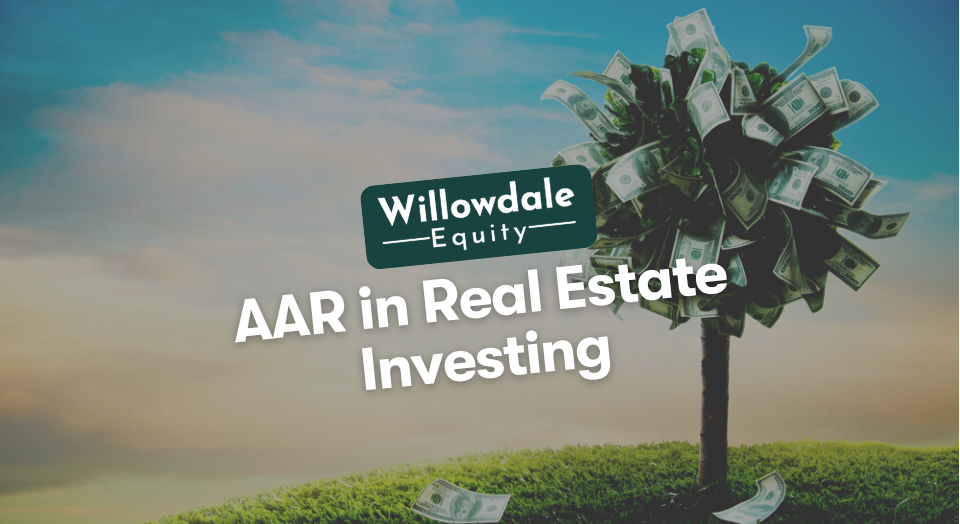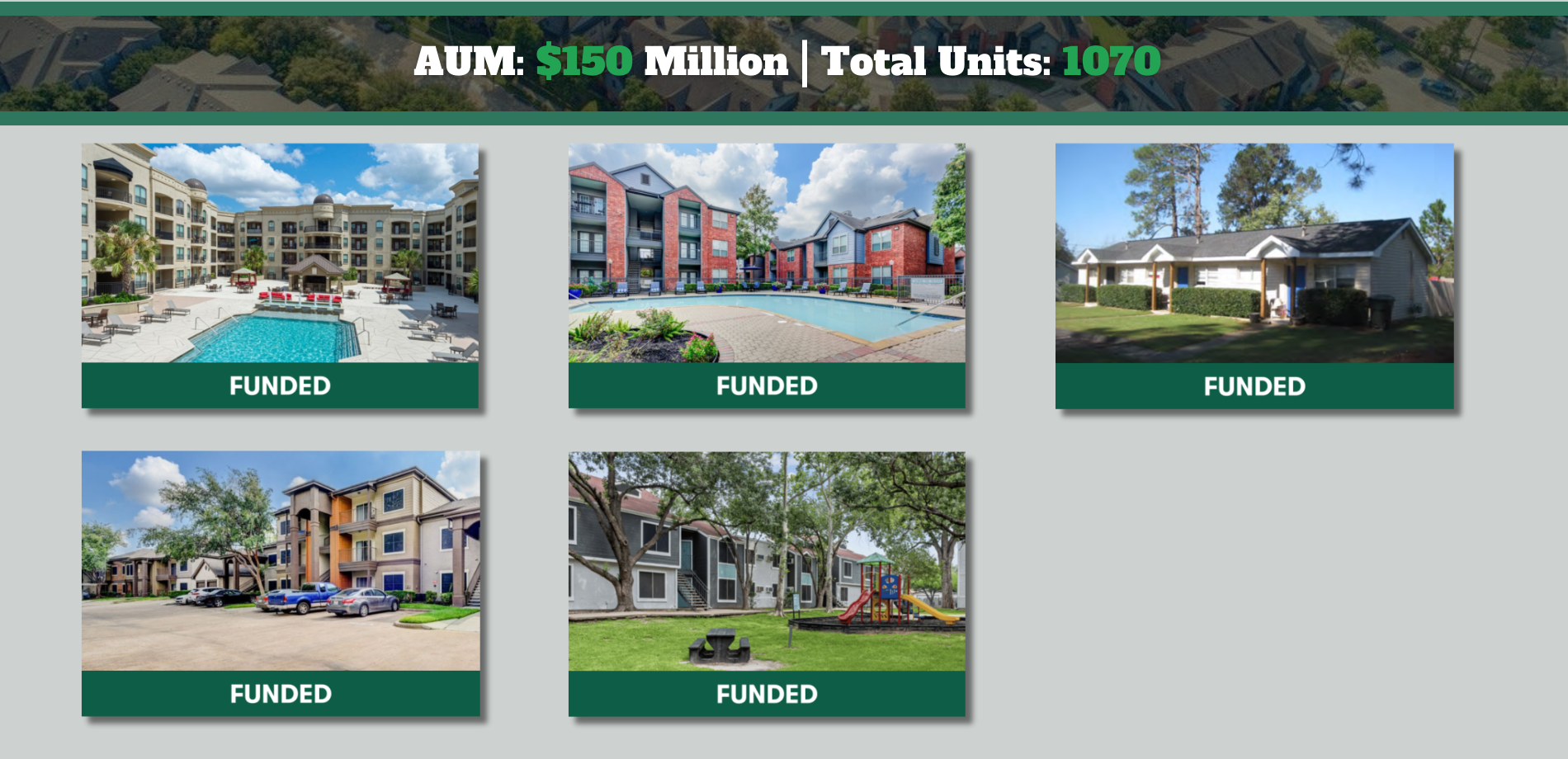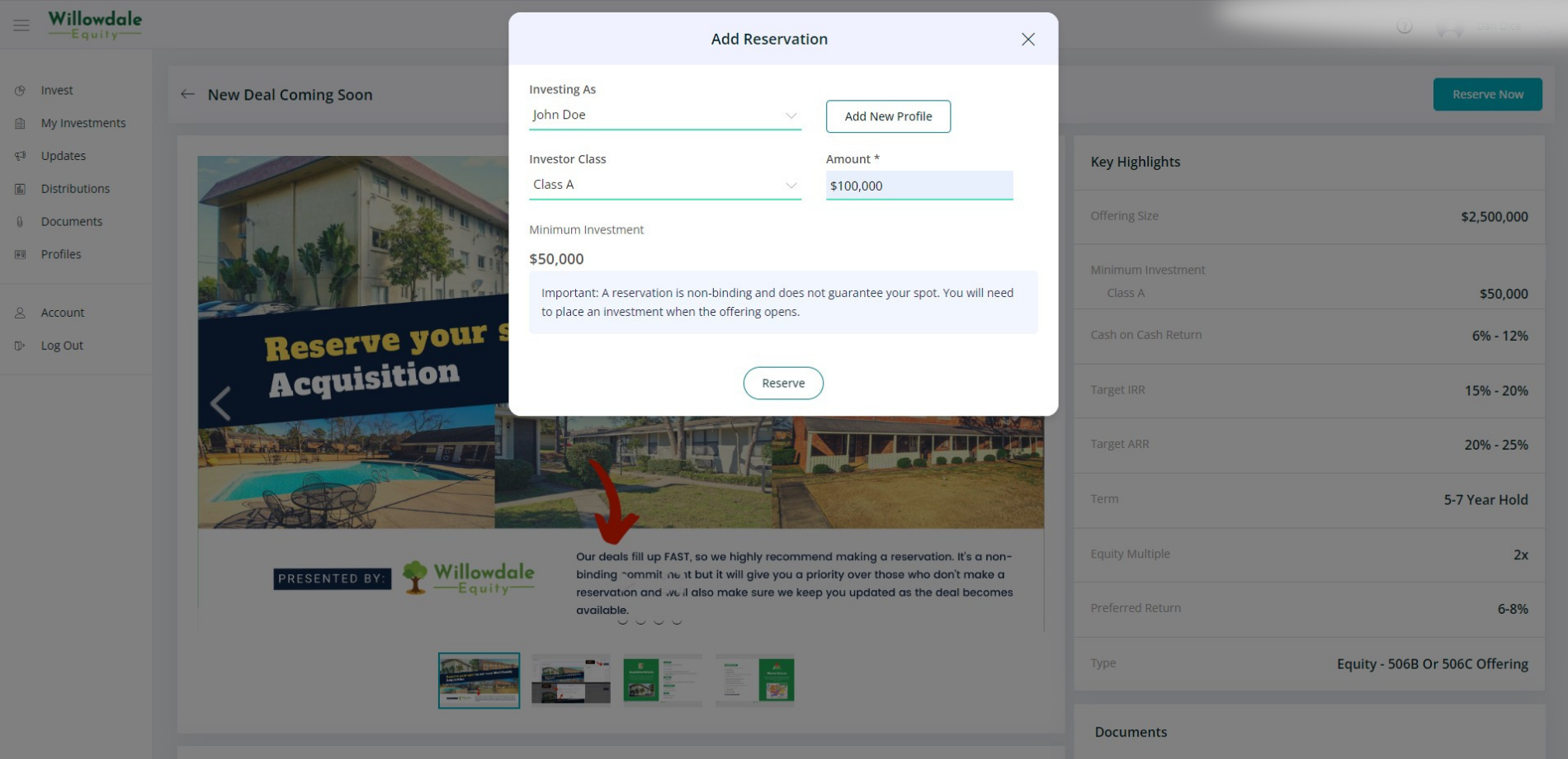
The AAR in Real Estate Investing: (AAR vs IRR & More)
This article is part of our guide on what a good IRR is for multifamily, available here.
Most real estate investors use the internal rate of return (IRR) as the yardstick for any project’s return performance. This is because the IRR considers the time value of money. Due to inflation’s natural devaluation of the currency over time and several other reasons, a dollar received today has more value than a dollar received in the future in a real estate investment.
The speed of returns significantly impacts IRR, so the faster or more frequently cash distributions are delivered to investors, the greater the IRR. In this article, we’ll help you understand the Average Annual Return (AAR) by explaining what AAR in real estate investing entails, providing an ARR example, outlining the importance of AAR in analyzing real estate investment opportunities, and comparing AAR with IRR.
Key Takeaways
-
The annual average return, often known as AAR, is a formula used to assess an asset’s performance over time.
-
To perform the calculation, you would need to total all the cash flow distributed throughout the deal and all the sales profits.
-
A solid average annual return (AAR) on a deal would be around 12-14%. However, this varies based on the market and investment class you are investing in.
What is the AAR in Real Estate Investing?
The annual average return, often known as AAR, is a formula used to assess an asset’s performance over time. To perform the calculation, you would need to total all the cash flow distributed throughout the deal and all the sales profits.
Here is the equation for calculating AAR:
(Cash Flow + Profit) / Initial Investment) /Number of Years Investment Held For
AAR calculates the annual average profit of a given investment. When evaluating and contrasting various investment opportunities, you should pay close attention to the AAR.
It makes it possible to compare projects with various time horizons. For the sake of illustration, suppose the expected returns on a $100k investment are $100k over a 10-year period. That equates to an average annual return of 10 percent. Now, you would figure the AAR to be 20 percent if you were evaluating a similar opportunity that yields the same returns but this time over a 5-year horizon instead of 10.
Let’s look to understand this better with the help of a more specific example of AAR.
An Example of the Average Annual Return
The average annual return assesses the resulting annual average return that was generated and averaged over each year for which the property was held. A solid average annual return (AAR) on a deal would be around 12-14%. However, this varies based on the market and investment class you are investing in.
As an illustration, if the cash invested was $150,000, and after operating expenses generated $120,000 in cash flow and return from the sale over four years, your AAR would be 20%.
($120,000/$150,000 initial investment=0.8) (0.8/4 years of investment=0.2% AAR).
Now that we understand what AAR is and how to calculate it, it’s time to look at why it’s vital in analyzing a real estate investment opportunity.
Good Read: What’s a Good Equity Multiple in Real Estate
The Importance of the AAR When Analyzing a Real Estate Investment Opportunity

Investors use AAR to analyze the overall historical performance of a given investment. Real estate, whether residential or commercial, bonds, stocks, and more investment vehicles can be analyzed using AAR. It is the median annual income during a specified period. Most investors consider the average yearly return for three, five, and ten years.
If a potential investor is considering a commercial property, you would want to see how the present annual return stacks up against the historical return. In addition to the IRR, the cash on cash return (CoC), and the return on equity (ROE) it’s just one more investment metric you should consider when performing your due diligence.
And this takes us to the last part, which compares AAR and the internal rate of return (IRR).
AAR vs. IRR
Regarding private real estate investment opportunities like a multifamily syndication, IRR and AAR are two often utilized return metrics. Both measure the investor’s projected return on investment with a few distinctions.
The Internal Rate of Return (IRR) is calculated differently than AAR, even though it is also used to gauge the investment’s performance. The IRR measures the predicted yearly growth rate for an investment.
In contrast to AAR, the IRR accounts for the value of those returns, while AAR does not consider the time value of money. This is the main problem with utilizing it as the only investment tool. A dollar today is worth more than it will be in a year because that dollar loses value due to inflation.
The average annual return is the basis on which several syndicators in real estate present their profits. Since both are frequently presented as double-digit percentage returns, this statistic initially has the same impression as the IRR.
We recommend concentrating on IRR since it provides a more comprehensive view of future profits and the value of those future profits in tomorrow’s market.
Frequently Asked Questions about AAR in Real Estate
The accounting rate of return (ARR) expresses the projected percentage rate of return on an investment in real estate in comparison to the cost of the upfront investment.
It’s calculated by totaling all profits generated from an investment; then, you would divide that total by the amount invested in the deal. Then you would take that number and divide it by the number of years you held the investment.
Average Annual Return (AAR) in Real Estate - Conclusion
As you can see, there are other metrics besides the AAR that you can use to analyze a real estate investment before you fund a particular deal. Consider the advantages and disadvantages of each, and don’t forget to evaluate an investment opportunity using a variety of metrics. With confidence, you will be equipped with the necessary knowledge to pick the right deal that meets your particular risk profile and return expectations.
Join the Investors Club to access private value-add multifamily investment opportunities for passive investors with Willowdale Equity.
The Willowdale Equity Investment Club is a private group of investors that are looking to passively grow their capital and share in all the tax benefits through multifamily real estate investments.






